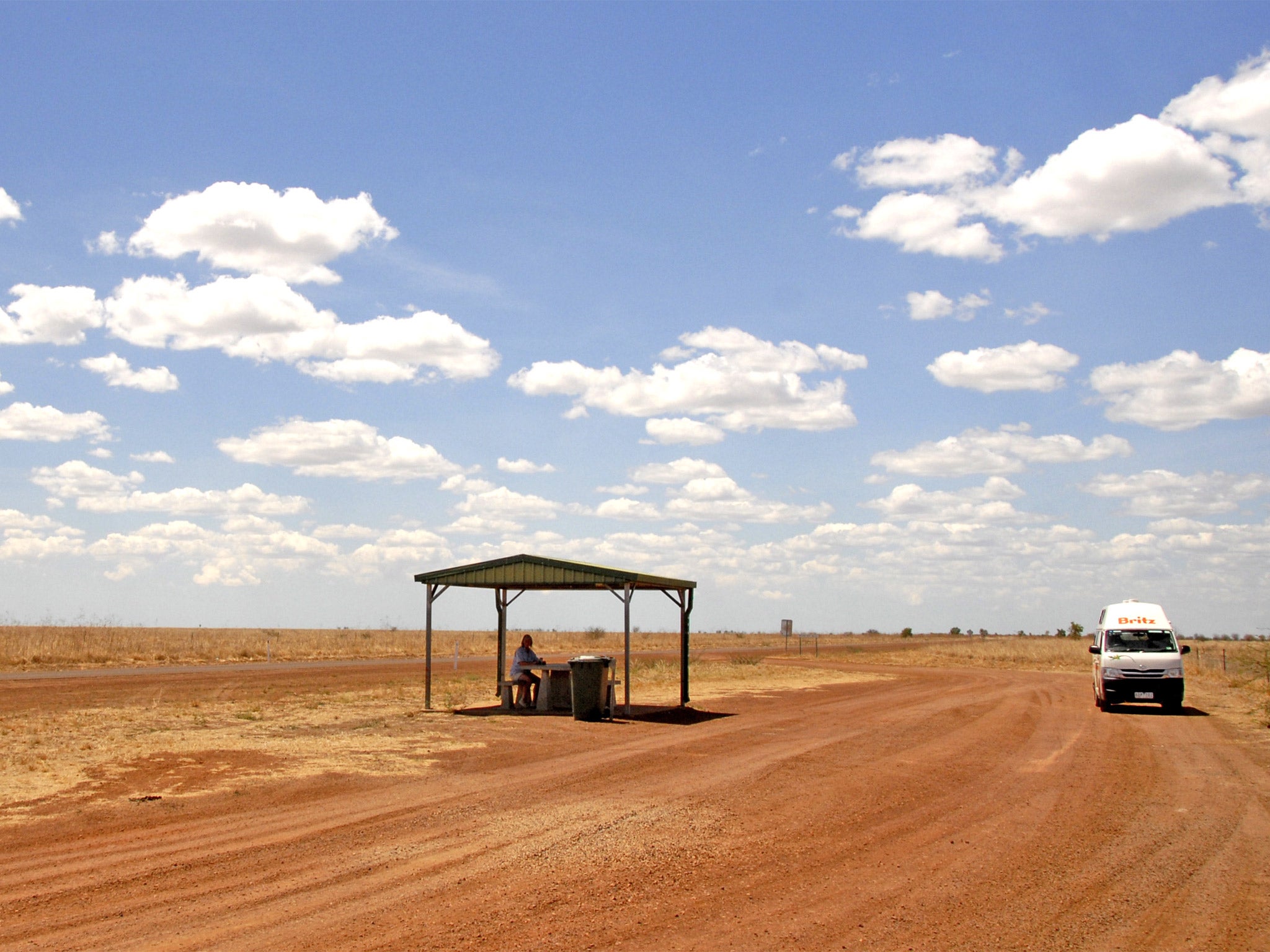Cloncurry: A town in the Queensland outback that is so dry it may run out of people
After two rainless years, an Australian mayor sees moving everyone out as a final possibility

They breed them tough in outback Queensland, where residents of one small town gripped by drought are contemplating radical measures should their water supplies run out: a mass evacuation.
Cloncurry, population 3,000, has had next to no rain for the past two years. Already restricted to using water only for the bare essentials of bathing and cooking, locals may soon have to resort to the “third world” option – as the local mayor, Andrew Daniels, calls it – of boiling bore water to drink.
And after that, depending on the state of the bores, they may have no other choice but to move out en masse. “It’s an extreme move. It’s the final straw,” Mr Daniels said. “But people are really thinking about the dire position we’re in. It’s a very, very dire time for the bush.”
This is monsoon season, when the rivers should be surging and the dams overflowing, thanks to heavy rain brought by tropical cyclones. But while some areas have welcomed downpours, the rain has bypassed Cloncurry, situated 500 miles from the north Queensland coast, more or less in the middle of nowhere.
Outback Queensland is like a dustbowl at present, with more than two-thirds of the state officially in drought. The big dry is exacting a heavy toll, particularly on those who live off the land.
Timmy Maxham, manager of the Gidgee Inn in Cloncurry, told ABC radio: “I know that a lot of farmers are quite desperate – they’ve had quite a few suicides recently. I heard a story last week of a grazier who had to shoot 100 cattle, and then he shot himself. It’s really tough.”
Mr Daniels said that evacuation was part of an emergency plan being developed by the town council in response to dwindling water supplies. In the past, Cloncurry has brought water in by rail from its nearest neighbour, Mount Isa, 65 miles to the west.
However, that is not an option this time: the reservoir from which Mount Isa, a mining town, draws its water is barely 20 per cent full, according to the local MP, Robbie Katter, and it, too, is contemplating shipping residents out. “We have to talk about the worst-case scenarios,” Mr Katter said.
Cloncurry, too, is a mining town; rich reserves of copper and gold lie underground. But in these arid inland areas the really valuable commodity is water – some call it liquid gold. The lack of rain has been exacerbated by blistering temperatures in recent weeks of up to 44C.
For the state government, according to Mr Daniels, the needs of the mining industry supersede those of residents. “If the government was fair dinkum [genuine] and didn’t want the communities to suffer, they would turn off the water to the mines,” he said. “But they won’t do that, because they get about A$250m [£136m] in royalties a year out of this area.”
Queensland Agriculture Minister John McVeigh said: “This particular drought as it impacts on agriculture and regional communities is significantly different to issues that we’ve dealt with in the past. There are those market conditions and issues affecting industry, including low cattle prices. But it’s also the fact that we’ve seen heat waves in recent times which has only exacerbated the problems for stock and graziers.
“Often in previous droughts the occasional shower, the occasional storm was able to at least top up surface water supplies, dams and so forth. We haven’t seen any of that decent sort of activity for, in many places, almost two years.”
Cloncurry has two main water supplies: Chinaman Creek Dam, which is down to 15 per cent, and a second dam, Lake Julius. Once they are exhausted, it will be reliant on water from underground bores, which Mr Daniels says is “a scary thought, but I’m hoping and praying that rain comes before we have to get to that”.
The Queensland drought is not the first time Australia has seen severe drought. In 2007, the country saw the worst drought on record, forcing the government to warn that it would have to switch off the water supply to the continent’s food bowl.
The drought affected the Murray-Darling basin in south-eastern Australia, which yields 40 per cent of the country’s agricultural produce. The causes of that drought, which began in 2002 and was felt most acutely over the past six months, were complex. But few scientists dispute the part played by climate change, which is making Australia hotter and drier.
Subscribe to Independent Premium to bookmark this article
Want to bookmark your favourite articles and stories to read or reference later? Start your Independent Premium subscription today.

Join our commenting forum
Join thought-provoking conversations, follow other Independent readers and see their replies